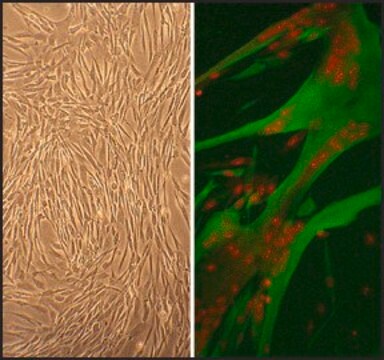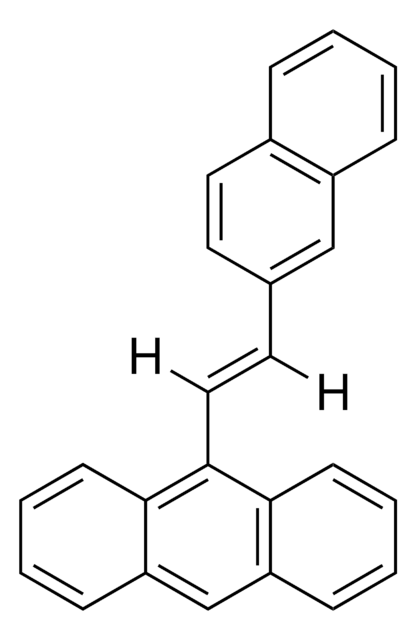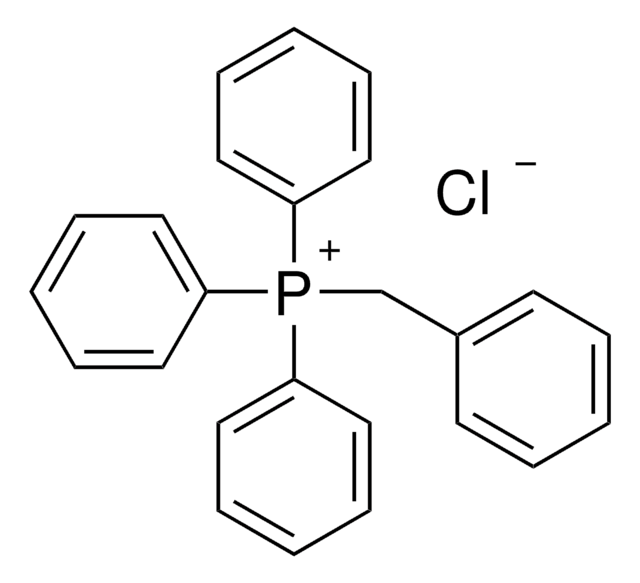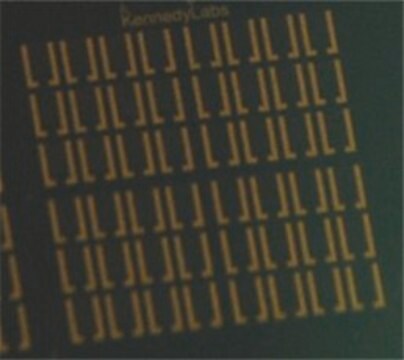S150-05F
Human Skeletal Muscle Cells: HSkMC: Pre-Screened for Insulin & AMPK signaling, fetal
Autenticatiper visualizzare i prezzi riservati alla tua organizzazione & contrattuali
About This Item
Codice UNSPSC:
12352204
Prodotti consigliati
Origine biologica
human skeletal muscle (normal limb)
Confezionamento
pkg of 500,000 cells
Modalità di accrescimento
Adherent
Cariotipo
2n = 46
Morfologia
Skeletal muscle
tecniche
cell culture | mammalian: suitable
Malattie correlate
muscular dystrophy
Condizioni di spedizione
dry ice
Temperatura di conservazione
−196°C
Descrizione generale
Lot specific orders are not able to be placed through the web. Contact your local sales rep for more details.
Our pre-screened Human Skeletal Muscle Cells (HSkMC) are isolated from the skeletal muscle of hamstrings and retain morphological, biochemical, and metabolic characteristics of skeletal muscle. Pre-screened HSkMCs can undergo differentiation to exhibit actin and myosin myofilaments and are specially tested for functional AMPK and Insulin Signaling Pathways.
1. AMPK Signaling Pathway
AMP-activated protein kinase (AMPK) is a major cellular regulator of lipid and glucose metabolism and mediates the metabolic changes associated with exercise. AMPK phosphorylates and inhibits activity of acetyl CoA carboxylase (ACC), the enzyme responsible for making malonyl-CoA which is required for fatty acid chain elongation.
2. Insulin Signaling Pathway
Skeletal muscle is one of major target tissue of insulin action. Upon insulin binding, insulin receptor tyrosine kinases catalyze autophosphorylation of tyrosine residues providing docking sites for downstream signaling components, such as IRS-1 and Grb2, which relay the signaling further into the cell (see Fig.B).
Our pre-screened Human Skeletal Muscle Cells (HSkMC) are isolated from the skeletal muscle of hamstrings and retain morphological, biochemical, and metabolic characteristics of skeletal muscle. Pre-screened HSkMCs can undergo differentiation to exhibit actin and myosin myofilaments and are specially tested for functional AMPK and Insulin Signaling Pathways.
1. AMPK Signaling Pathway
AMP-activated protein kinase (AMPK) is a major cellular regulator of lipid and glucose metabolism and mediates the metabolic changes associated with exercise. AMPK phosphorylates and inhibits activity of acetyl CoA carboxylase (ACC), the enzyme responsible for making malonyl-CoA which is required for fatty acid chain elongation.
2. Insulin Signaling Pathway
Skeletal muscle is one of major target tissue of insulin action. Upon insulin binding, insulin receptor tyrosine kinases catalyze autophosphorylation of tyrosine residues providing docking sites for downstream signaling components, such as IRS-1 and Grb2, which relay the signaling further into the cell (see Fig.B).
Origine della linea cellulare
Muscle
Applicazioni
lipid and glucose metabolism, exercise, insulin action, cell signaling
Componenti
Basal Medium containing 10% FBS & 10% DMSO
Nota sulla preparazione
- 2nd passage, >500,000 cells in Basal Medium containing 10% FBS & 10% DMSO
- Can be cultured at least 15 doublings
Mantenimento delle subcolture
Please refer to the HSkMC Culture Protocol.
Codice della classe di stoccaggio
11 - Combustible Solids
Classe di pericolosità dell'acqua (WGK)
WGK 3
Punto d’infiammabilità (°F)
Not applicable
Punto d’infiammabilità (°C)
Not applicable
Scegli una delle versioni più recenti:
Certificati d'analisi (COA)
Lot/Batch Number
Ci dispiace, ma al momento non ci sono COA disponibili online per questo prodotto.
Se ti serve aiuto, non esitare a contattarci Servizio Clienti
Possiedi già questo prodotto?
I documenti relativi ai prodotti acquistati recentemente sono disponibili nell’Archivio dei documenti.
Il team dei nostri ricercatori vanta grande esperienza in tutte le aree della ricerca quali Life Science, scienza dei materiali, sintesi chimica, cromatografia, discipline analitiche, ecc..
Contatta l'Assistenza Tecnica.







